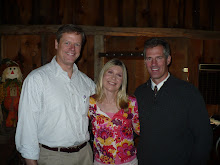

While walking along the road today I chanced upon a pumpkin plant growing haphazardly over a stone wall. This is the third consecutive year a pumpkin has grown in that same spot, seemingly unplanned by any gardener, so perhaps my encounter wasn't truly based on luck. The yellow flowers, just beginning to bloom, many of them still closed and green, will soon produce their orange fruit, but for now remain empty.

Something about the air was different -- possibly it was the cool temperature or maybe the cloudy sky. Whatever the cause, a change in the atmosphere was unmistakable.
The end of August. That in between time. That disconnected juncture when the season starts to shift, when summer begins fading, yet cold days and nights remain somewhere in the distance.
Ovenbirds are yellow-brown "wood-warblers," (Sibley, p.448) with streaking on their bellies and a beautiful orange stripe on the crown of their heads. You must have a stroke of luck to see not only that orange stripe, but also the bird itself, as they like to scrum around in the underbrush of the forest floor. I didn't see an ovenbird on my walk, but its uneasy message, as spelled out by Robert Frost, was plain and as obvious as a barren pumpkin flower.
The Oven Bird
by Robert Frost
There is a singer everyone has heard,
Loud, a mid-summer and a mid-wood bird,
Who makes the solid tree trunks sound again.
He says that leaves are old and that for flowers
Mid-summer is to spring as one to ten.
He says the early petal-fall is past,
When pear and cherry bloom went down in showers
On sunny days a moment overcast;
And comes that other fall we name the fall.
He says the highway dust is over all.
The bird would cease and be as other birds
But that he knows in singing not to sing.
The question that he frames in all but words
Is what to make of a diminished thing.
The Poetry of Robert Frost, edited by Edward Connery Lathem, Holt, Rinehart and Winston, New York, 1969, pp.119 - 120.
The Sibley Guide to Birds by David Allen Sibley, Alfred A. Knopf, New York, 2001, p.448











3 comments:
The only oven birds in this house are Perdue oven stuffer roasters. I have no idea what Bob Frost is talking about.
I think Robert Frost is relating the Ovenbird and its habits to convey the idea of melancholy one feels when summer fades into fall, or perhaps more significantly, when life becomes less than what it once was. His last two lines are significant and seem to sum up his poem.
"The question that he frames in all but words
is what to make of a diminished thing."
I chose to write about this because of my life circumstances, that is, my two beautiful girls now being away at college. The empty pumpkin flower, seemed symbolic, a somewhat pretty flower with no fruit. Going back to "The Ovenbird," how do I deal with living in a situation that is "diminished"? This poem and my posting is meant to make one uneasy.
I have a girl off at college, leaving a big hole in the life of the family. We are left with our hope for her future "flowering". Emily Dickinson (who attended the same school) makes a bird metaphor out of our hope.
"Hope is the thing with feathers
That perches in the soul,
And sings the tune without the words,
And never stops at all,
"And sweetest in the gale is heard;
And sore must be the storm
That could abash the little bird
That kept so many warm.
"I've heard it in the chilliest land
And on the strangest sea;
Yet, never, in extremity,
It asked a crumb of me.
Post a Comment